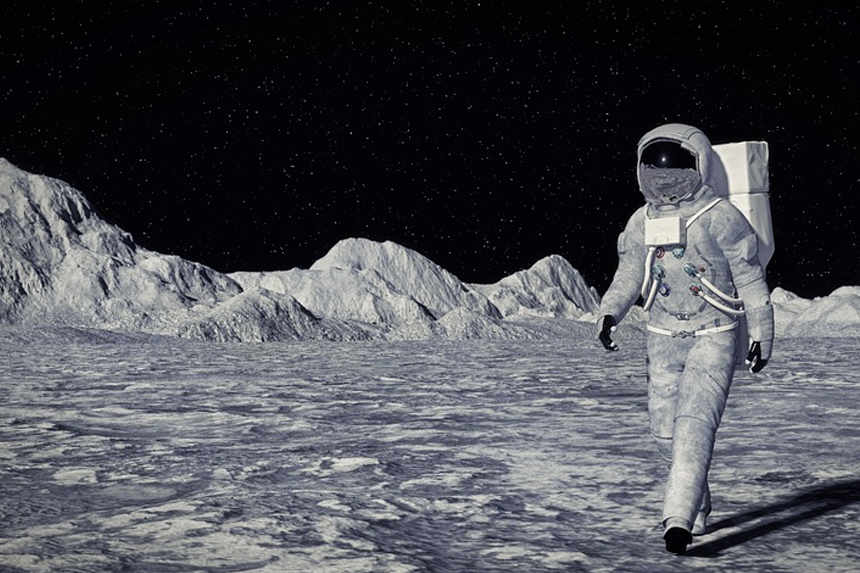With its creative egg-shaped habitat known as Hab-1 (short for Habitat-1), India is making a breakthrough in space research. Designed as a self-contained space house, this facility marks the launch of the Indian Space Research Organisation (ISRO) into “analog missions,” which replicate space-like conditions to equip humans for actual flights.
Recently tested for three weeks in Ladakh, Hab-1’s isolated, high-altitude setting provides insight into potential lunar or Mars living conditions for Indian astronauts.
Why does Hab-1 represent a Space-Ready Design for Extreme Environments?
Hab-1 is built of space-grade Teflon and insulated with industrial foam for limited space and resources. Its small form calls for a bed, a pull-out workstation, supply storage areas, a kitchenette, and a dry toilet.
“Hab-1 is built with consideration for the very limited space available on the Moon or Mars,” says Aastha Kacha-Jhala, a space architect from Gujarat-based company Aaka, which created the habitat. “Water will also be extremely limited, thus we designed a dry toilet and a suitable waste disposal system to guarantee that the habitat remains odor-free.”
Reflecting the difficulties of long-term space travel, the simulation saw an astronaut spending three weeks in total isolation. This Test clarified the psychological and physical stamina needed for the following missions.
Why was Ladakh selected for this Test?
Ladakh was selected for this first experiment because its surface characteristics resemble those of Mars and the Moon. It has a hostile temperature and rocky terrain. Ladakh, 3,500 meters (11,483 feet) above sea level, shows significant temperature swings from a daytime high of 20°C to a frigid -18°C at night.
“Geologically, Ladakh’s topography and soil are rather similar to what we discover on Mars or some areas of the Moon,” said Ladakh University’s Dean of Research Studies, Professor Subrat Sharma, who worked on the study. “You need facilities where space-like conditions can be generated since you cannot travel to space to test every time.”
Soil samples gathered during the mission are being analyzed to investigate whether minerals discovered on extraterrestrial surfaces could be used for space housing.
Life Like During the Simulation?
The three-week imprisonment for the simulated astronaut tested both physically and psychologically.
I was detached from my human surroundings. The 24-year-old astronaut, who wished to remain nameless, said every action I took was planned: when to get up, what to do, and when to go to sleep. “A 24×7 camera tracked every motion and sent back office data on my health and activities.”
Although the first few days were thrilling, the same schedule started to wear down. It began to affect my everyday output. My attention dropped, and my sleep pattern changed,” he said.
Biometric sensors analyze sleep patterns, heart rate, and stress levels to check the astronaut’s condition. Daily saliva and blood tests evaluated the body’s response to limited, isolated environments.
In what way does Hab-1 complement India's space plans?
The Hab-1 project fits India’s rising space exploration ambitions. Set to launch next year, ISRO’s Gaganyaan mission seeks to take three astronauts into low-Earth orbit for three days at an altitude of 400km (248 miles.). Beyond this, by 2035, India intends to open its first space station and send a human to the Moon by 2040.
Two of the four astronauts chosen for Gaganyaan are already in NASA undergoing training. Prof. Sharma, however, thinks that buildings like Hab-1 will soon help India rely less on outside agencies. “Once we have our simulation mission, we won’t have to depend on foreign space agencies to train our astronauts,” he remarks.
From Global Space Programs, what lessons India may pick?
Simulated missions, which test equipment and research human endurance, are a pillar of space research worldwide. NASA, the European Space Agency, Russia, China, and commercial companies routinely perform such missions.
In April, NASA started experiments in Oregon to evaluate a robotic dog called Lassie for lunar exploration. Four volunteers just finished a year-long Mars simulation in Texas. While Russia and China work on their own otherworldly homes, NASA wants to 3D-print a Moon base using lunar elements.
India refuses to lag behind others. “The information collected from Ladakh will help us develop medical technology to address the needs of our astronauts when they face challenges in space,” states Prof. Sharma.
How might this study equip India for the Moon and beyond?
Mission on the Moon, where days and nights continue significantly longer than on Earth, or in space, where oxygen is limited, depend on an awareness of how human bodies adapt to hostile environments. “We have to know how our bodies would operate in such surroundings,” says Professor Sharma.
India has made significant progress toward this knowledge via Hab-1. Simulation missions like these will be essential in realizing such aspirations as space agencies worldwide intensify their attempts to build permanent facilities on the Moon and Mars.








